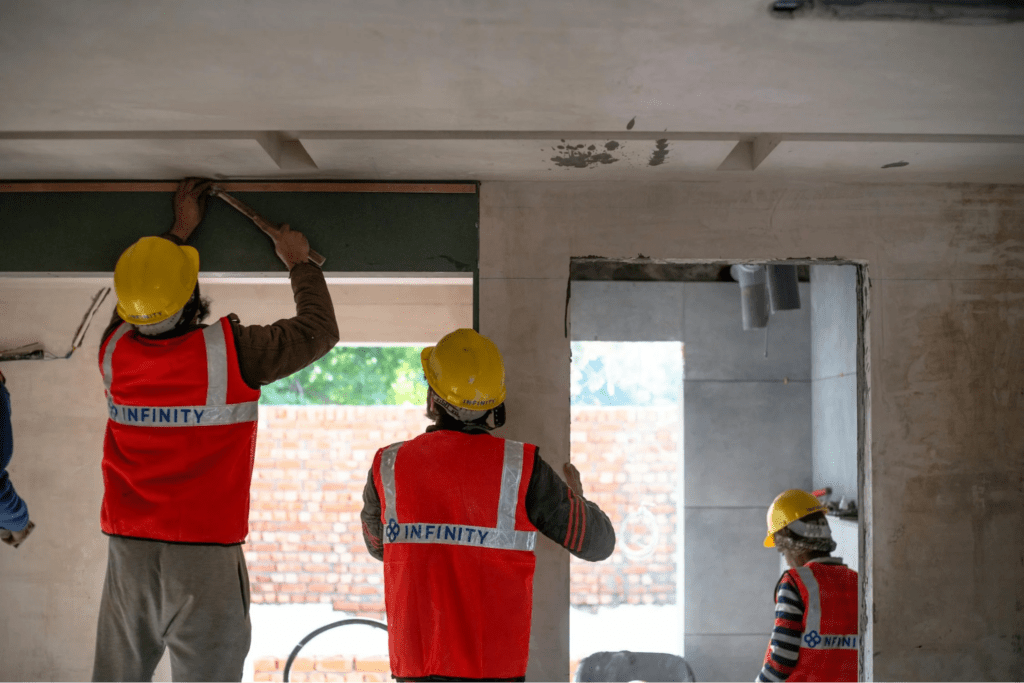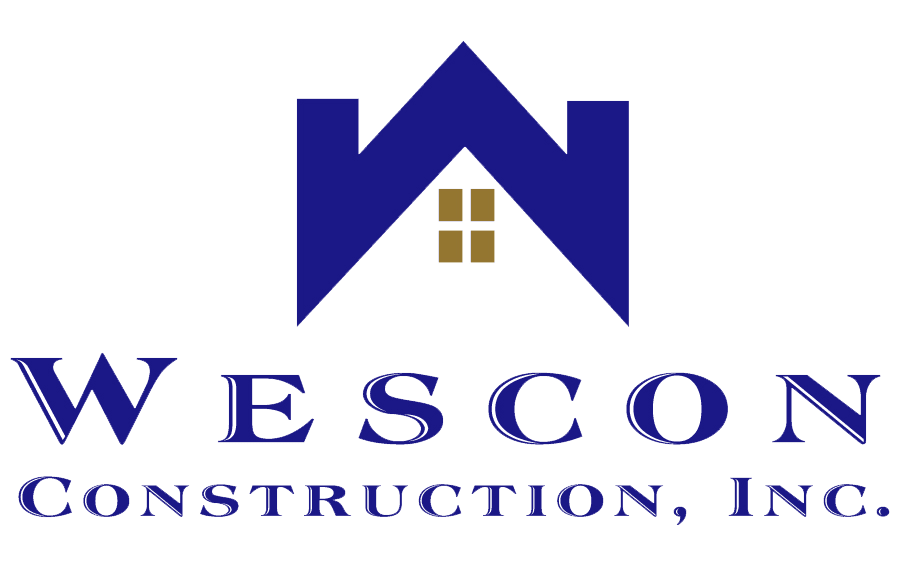What To Know About Flat Roof Replacement
If you’re facing the need for a flat roof replacement, there are some important things to keep in mind. Flat roofs can be tricky, and knowing your options, the process involved, and how to choose the right contractor can make a big difference. This guide will walk you through the essentials, so you’re better prepared for your roofing project.
Key Takeaways
- Explore various flat roofing materials before starting your replacement.
- Consider re-covering or coating as alternatives to full replacement.
- Always hire a contractor with specific flat roof experience.
- Understand the steps involved in the replacement process.
- Budget for potential unexpected costs during the project.
Understanding Flat Roof Replacement Options
When you’re gearing up to sort out your flat roof, knowing your options can make a big difference in how smoothly everything goes. There are several methods you can pick from based on what your roof needs, your budget, and how much hassle you’re ready to take on.
Know Your Options
Understanding your roof upgrade options, whether full replacement or lighter fix, is crucial for a smoother process. There are three methods: full roof replacement, additional membrane recovery, and roof coating. Match each method to your roof’s condition and future plans.
Re-Covering Alternatives
Re-covering alternatives are a viable option for EPDM or TPO roofs that don’t show severe wear or leakage. They allow for a new roofing layer without a complete tear-off. To decide, assess the roof’s condition, look for signs of deeper damage, and weigh the benefits against long-term performance.
Roof Coating Benefits
A roof coating is a great way to add a bit of extra protection without the full expense of a new roof. This method involves applying a thin liquid seal over your existing roof, which can make a big difference in protecting against heat, UV rays, and moisture. To give you a clear picture, here’s a quick look at some benefits:
- UV Protection: Shields against sun damage.
- Water Resistance: Keeps moisture out.
- Cost-Effective: Saves time and money compared to full replacement.
- Ideal for fair-looking roofs.
Essential Tips for Flat Roof Replacement

When you decide it’s time to replace your flat roof, you have to take a close look at a few key areas. These tips will help you steer clear of mistakes and make the process run smoother.
Research Roofing Materials
Before you choose your materials, spend some time looking at what’s available. You need to know if a membrane or a re-covering option best fits your needs. For instance, consider materials like modified bitumen, TPO, or EPDM when comparing durability and cost. Here are a few ideas:
- List out pros and cons for each roofing type
- Compare longevity and heat resistance
- Read reviews on performance in varying weather conditions
Don’t forget to check your protective gear options to keep yourself safe while doing some hands-on investigation.
Understand Warranty Implications
- Inquire about workmanship and material coverage.
- A good warranty can save future expenses.
- A warranty is an agreement backing up a new roof against potential issues.
- Verify clear definitions of both parts of the warranty.
- Ask for clarification on unclear items.
The Flat Roof Replacement Process Explained
In this section, you’ll find a clear look at replacing a flat roof. This guide walks you through the process from start to finish, ensuring you know what to expect every step of the way. For additional details on understanding your options, check out the roof replacement guide.
Initial Assessment Steps
Before starting any work, inspect your roof’s condition by examining the structure, water pooling, drainage issues, and damage to the membrane or materials. This quick assessment can help determine if minor repairs are needed.
Material Removal Procedures
Assess the deck and strip old materials, carefully dismantling the roofing membrane, clearing debris, and inspecting the underlying structure. Focus on minimizing waste and preparing the deck for future weatherproofing applications, taking time during removal.
Choosing the Right Roofing Contractor
When it comes to your flat roof replacement, you shouldn’t take any shortcuts in selecting the right contractor. This decision can affect not only your project’s quality but also your peace of mind. Use the steps provided here along with tips like checking references and verifying details to make a solid choice. In many cases, you might even find trusted professionals who can match your project needs perfectly.
Importance of Experience
You need someone who has handled flat roof replacements before. When you work with experienced contractors, you’re more likely to see proper use of quality materials and correct installation techniques. Before you sign any contract, confirm that they have a history of similar projects in your area.
Consider these points when evaluating a contractor’s experience:
- Check their portfolio of completed flat roof replacements.
- Ask for local references that you can speak to directly.
- Confirm they understand the specifics of flat roofing techniques.
Questions to Ask Potential Contractors
It’s smart to prepare a list of questions before you even pick up the phone. This helps you quickly weed out those who might not be the right fit. Here are some questions you should definitely consider:
- How many flat roof projects have you completed recently?
- Can you provide proof of insurance and licensing?
- What kind of warranty do you back your work with?
Ask them specifics about materials, project timelines, and what you should expect cost-wise. This way, you’re not left with surprises later on. It never hurts to ask for additional details like detailed estimates during your conversation.
Evaluating Contractor Reviews
When choosing a flat roof replacement contractor, check ratings and testimonies for reliability and quality. Checking different channels for comments and community recommendations can yield information. A local contractor with good reviews and open communication will likely make the process run more smoothly.
- Look for reviews on various platforms to get a comprehensive view of feedback.
- Seek recommendations from neighbors or local community groups for trusted referrals.
- Watch for red flags, such as repeated complaints or unresolved issues.
- Choose a contractor with a strong local reputation and transparent feedback.
- Hiring an experienced contractor can lead to smoother work and lasting results.
Long-Term Considerations for Flat Roofs
Maintenance Best Practices
When you keep your flat roof in tip-top shape, you secure a long life for your roof. You should regularly check for debris, clean off leaves and branches, and give the surface a look-over for any cracks or issues. If you follow these steps, you may avoid bigger problems down the line:
- Remove dirt and debris at least twice a year.
- Check and clear drainage areas to prevent water pooling.
- Schedule a yearly inspection with a trusted professional.
Keep up with routine maintenance now, and you can save yourself heavy costs later.
Signs of Wear and Tear
You need to keep an eye out for clear signs that your roof might be nearing its end. Look for these common issues:
| Symptom | What to Look For | Recommended Action |
| Cracking and Blistering | Small cracks or blisters forming on surface | Contact your roofer immediately |
| Discoloration | Faded or uneven color changes | Monitor and plan for repair |
| Water Pooling | Areas where water accumulates | Have water drainage checked |
If you see one or more of these signs, it might be time to plan for repairs or even a replacement. Always trust your gut—if something feels off, investigate further.
Planning for Future Replacements
Planning ahead is vital, especially if your roof is showing age signs. Set aside money gradually, and consider these three steps:
- Create a dedicated savings plan for eventual roof replacement.
- Keep thorough records of past repairs and maintenance. Know your roof’s history.
- Keep in touch with roofing experts as they can help you decide the right moment for a replacement.
When you take a proactive stance on maintenance and planning, you minimize surprises later on. This approach allows you to comfortably manage costs and timeline expectations while keeping your home safe.
Cost Factors in Flat Roof Replacement
When you’re looking at a flat roof replacement, you need to keep in mind that many cost factors come into play. It’s not just about picking a new look for your house; every little choice you make can push the price up or down.
Material Costs Overview
First off, check out the costs for different materials. The type of insulation and membrane you pick matters a lot. For example, using a thicker insulation system can cost more, but it might save you money in the long run by keeping your building cooler and more efficient. Compare your options:
You should take a close look at what fits your needs best. Sometimes, a slightly higher cost up front can reduce maintenance later. Also, check out roof price for some basic numbers if you’re curious about Florida pricing.
Labor Expenses
Next, think about the costs for labor. How much you pay for installation can change the total bill noticeably. When vetting your contractor, remember these points:
- Look for experienced installers.
- Ask about their work pace and any guarantees.
- Consider local labor market rates.
Labor quality can affect the overall cost significantly. You may find that a contractor who charges a bit more for skilled work saves you money in unexpected repairs down the line.
Budgeting for Unexpected Issues
Even if you plan everything, you might run into surprises along the way. Make sure you set aside some extra cash to cover what you haven’t planned for. Additional costs may pop up for things like permits or disposing of old materials. Here are a few extra things to think about:
- Permits and fees that weren’t part of your original estimate.
- Extra work if underlying structural issues come to light.
- Delays caused by weather or supply shortages.
Always set aside a contingency budget. Unexpected issues can raise your total cost, so planning ahead ensures you won’t be caught off guard.
Budgeting for flat roof replacement involves thorough and realistic review of cost factors. Materials, labor costs, permits, and inspections all impact the price. High-quality materials can save money in the long run, while hiring experienced professionals may be pricier. Visit our website for more information and a free quote.
Final Thoughts on Flat Roof Replacement
Replacing a flat roof can feel overwhelming, but it doesn’t have to be. With the right information and a solid plan, you can tackle this project head-on. Remember to explore your options for materials and choose a contractor who knows their stuff. Don’t rush the process; take your time to ensure everything is done right. A well-replaced flat roof can protect your home for years to come, so it’s worth the effort. In the end, investing in quality will save you headaches down the road.
Need Expert Advice on Your Roofing Project? Contact us today!
"*" indicates required fields
